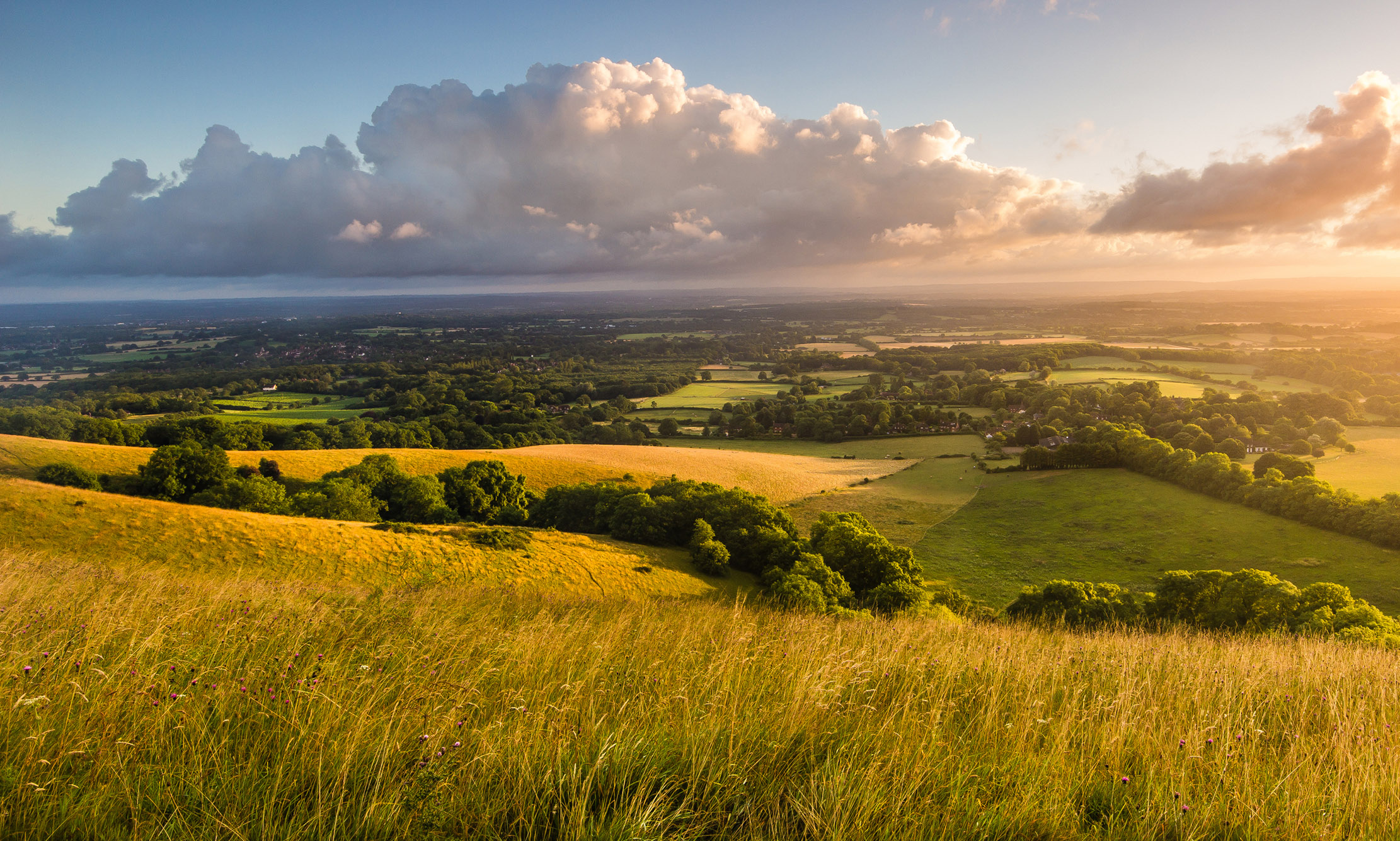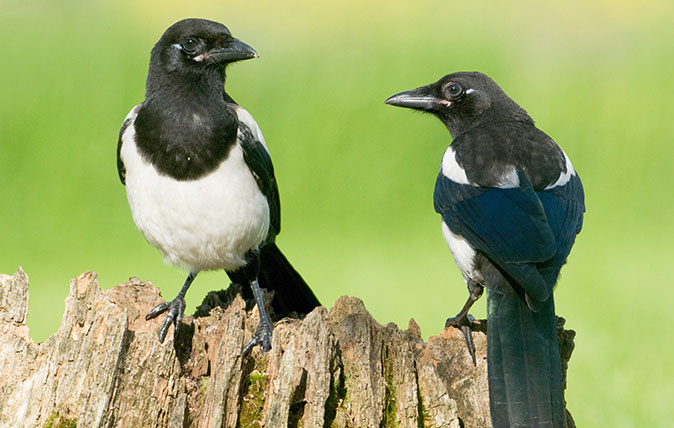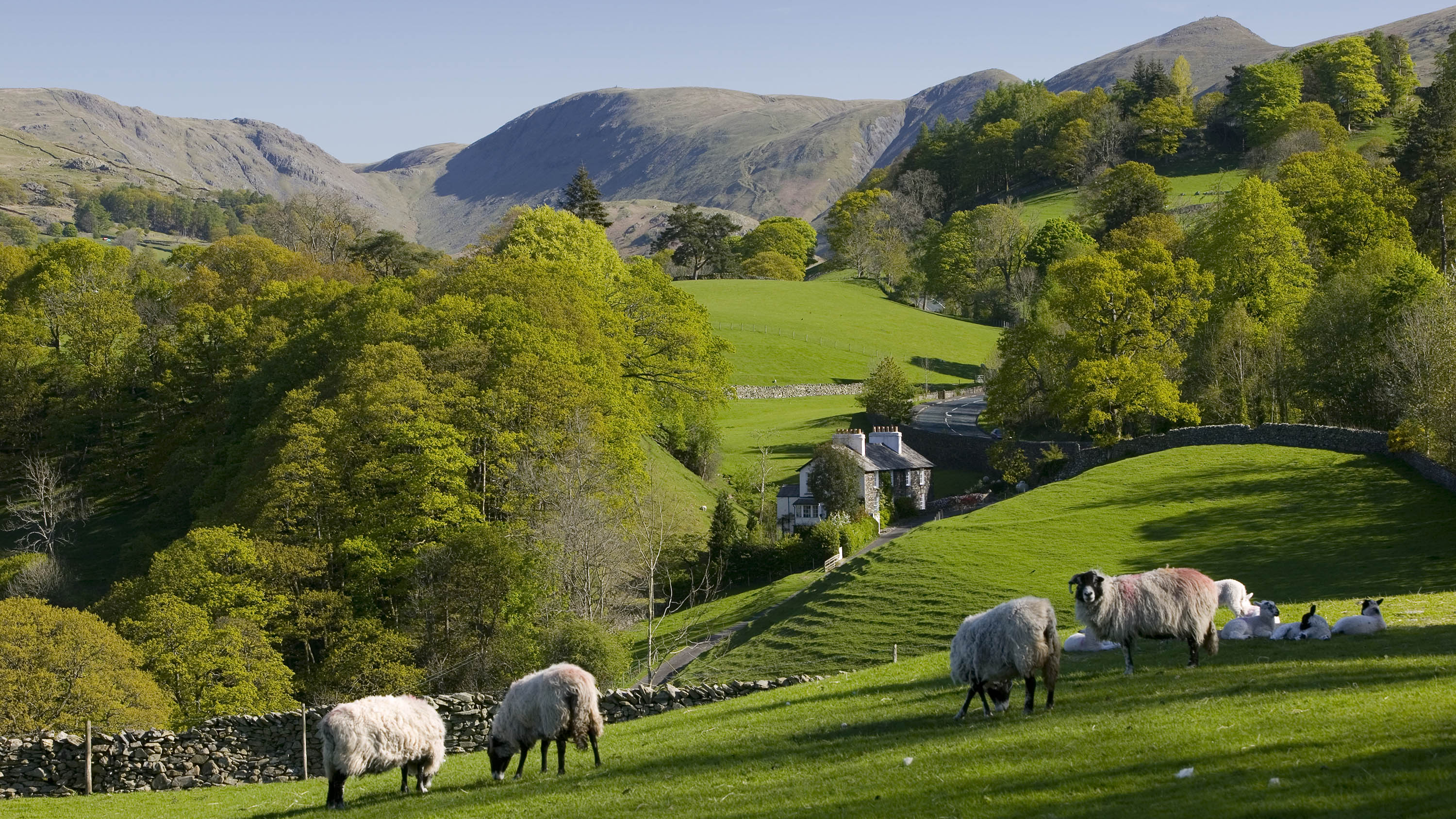Curious Questions: Is there a germ of truth in St Swithin's Day weather predictions?
Sunshine on St Swithin's Day is supposed to mean that we're set for 40 days of sun; if it rains, however, we're supposed to expect 40 days of precipitation. Martin Fone investigates how this curious prediction came about — and whether there is anything in it. The answer may surprise you...


One of the criteria to becoming a saint is to have performed a miracle during your lifetime. Sometime during the first half of the 9th century, a man named Swithin did exactly that — though not perhaps on the earth-shattering scale you might expect.
Swithin — or Swithun, if you prefer — was a powerful man: Bishop of Winchester, adviser to the Wessex kings, Egbert and Aethelwulf and mentor to the young future king Alfred. The miracle he performed? Apparently he made an old lady’s basket of eggs whole again after they had been smashed by workmen.
I am no expert on matters canonical but on the spectrum of miraculous occurrences, this seems pretty small beer. It was as if Swithin’s advocates were scrambling around for something to stake his claim, but it does show that you can make a saint by breaking an egg.
A modest sort of chap, it was Swithin’s wish — when it was time to meet his maker — to be buried in the grounds of Winchester Cathedral, ‘where the sweet rain of heaven may fall upon my grave’ instead of being interred inside, as was the custom for bishops. When he died in around 862, he was buried in the cathedral’s garden.
There he remained for over a century until the year 971, when one of his successors, Aetholwold, decided that Swithin – who was soon to be installed as patron saint of the cathedral — merited an opulent shrine inside the cathedral itself, where his remains should be housed. An elaborate ceremony was held on July 15th to mark the removal of his bones. Unfortunately, fierce, violent rainstorms broke out, which lasted forty days, putting an end to a period prolonged drought — a sign, onlookers thought, of the saint’s disapproval of the move. Although there still is a memorial to St Swithin in the cathedral, his shrine was a victim of Henry VIII’s Reformation. He may have gleaned some satisfaction in that.
The folklore around July 15th lasted far longer than the shrine: St Swithin’s Day is recognised as a turning point in our summer’s weather. There is even a bit of doggerel foretelling what will happen:
St Swithin’s day, if thou dost rain, For forty days it will remain. St Swithin’s day, if thou be fair For forty days ‘twill rain no more’.
However, there may be a touch of the apocryphal in the story of Swithin’s displeasure at the disturbance of his bones. The legend only seems to have first emerged in the 14th century, and only gaining widespread popularity as recently as the 17th and 18th centuries.
Sign up for the Country Life Newsletter
Exquisite houses, the beauty of Nature, and how to get the most from your life, straight to your inbox.
"There have been some spectacular failures, not least in 1924 when London enjoyed 13.5 hours of sunshine on St Swithin’s Day, only to experience rain on 30 days out of the next forty"
If we look elsewhere, we see similar traditions. The French look out for rain on St Gervais’ Day, July 19th, while in Germany Seven Sleepers’ day on July 7th is thought to determine weather patterns over the next seven weeks. It seems to be a piece of widely held weather lore rather than anything specifically to do with our curmudgeonly saint.
Be that as it may, is what happens on July 15th a reliable guide to the weather we are to enjoy over the next 40 days? Not really, say those who should know about such matters, the Meteorological Office — but it seems that there is at least something in it. Apparently our weather really do tend to lock into a pattern over high summer, only changing towards the end of August when meteorological autumn looms.
Of course, there have been some spectacular failures, not least in 1924 when London enjoyed 13.5 hours of sunshine on St Swithin’s Day, only to experience rain on 30 days out of the next forty. Conversely, in 1913 a rainstorm lasting 15 hours on July 15th was followed by thirty dry days out of the next forty. Perhaps you would be unwise to hang your hat on a dry St Swithin’s day presaging the absence of rain.
Notwithstanding that, we still pay some heed to weather lore in the form of proverbs and sayings. Indeed, a recent survey suggested 58% of Britons believe that they are accurate to some degree and that two-thirds of respondents considered them more reliable than official forecasts. The 83% who believed that a red sky night brings shepherd’s delight will be gratified to learn that there is some truth in the saying. High pressure, which brings in the better weather, traps dust and dirt, dispersing blue light, and gives the sky a distinctive rosy hue.

Open pine cones are a sign of dry weather, as 55% of respondents believed. In the absence of rain, they dry out, causing their scales to stand out more stiffly. And if there is rain before seven, it will often be dry by eleven, as 32% of the respondents thought. Weather systems, particularly those from the west, can sweep across the country quickly and four hours is often enough for conditions to change.
Sadly — nay, shockingly, to many of us who grew up on this myth — the 44% who think that the sight of cows lying down in a field is a sign of impending rain are misguided. They lie down for other reasons, often just for a rest. And, at least in Britain, it is rarely too cold to snow, despite what 49% of the respondents believed.
"Weather folklore is a snapshot of a distant past and a simpler age, when a general sense of what was in store was good enough"
Many of the sayings that we know of today are to be found in a remarkable 17th century document, Shepherd of Banbury’s Rules to judge the changes of weather, which John Claridge claimed to have discovered among some papers. As well as being a compendium of popular weather lore, the book included important meteorological advice, including descriptions of cloud types and the sort of weather associated with each.
You could imagine this was the sort of invaluable information a shepherd would accumulate over forty years of tending and watching over their flocks. Whether there really was a shepherd of Banbury or whether he was just a figment of Claridge’s imagination through whom to give the lore a patina of credibility is uncertain, but the book played an important role in preserving and popularising these folk traditions.
Given that much of our weather lore is several centuries old, is it any wonder that its accuracy leaves a little to be desired? After all, even professional weather forecasts, fed with the readings from sophisticated stations boasting the latest scientific equipment, are only accurate 80% of the time.
Perhaps we should see them as a reflection of the weather patterns that were experienced several centuries earlier. They are a snapshot of a distant past and a simpler age, when a general sense of what was in store was good enough. Climate has changed and will continue to do so, so why should we expect an observation that, on the balance of probabilities, was an indicator of a certain type of weather centuries ago, be accurate now?
My belief that there may be something in this line of thought is supported by some research conducted by Piotr Matczak of Adam Mickiewicz University and published in Weather, Climate and Society (July 2020). Matczak tested the accuracy of 28 Polish weather proverbs against weather station data and, perhaps unsurprisingly, found that only three had an accuracy of greater than 50%. Interestingly, though, the further back he went back in time, the more accurate the proverbs became.
I, for one, am not going to be too disheartened if it is raining on St Swithin’s Day.

Credit: Alamy
Red sky at night, and other mysteries solved: The science of sunrise and sunset
Is the 'Red Sky at night' saying true? What's the difference between sunrise and sunset? And why does the sky

Credit: Alamy
10 famous country superstitions – and is there any truth in them?
We take a look at the reasoning behind some country superstitions like 'Red sky at night, shepherd's delight' and other
After graduating in Classics from Trinity College Cambridge and a 38 year career in the financial services sector in the City of London, Martin Fone started blogging and writing on a freelance basis as he slipped into retirement. He has developed a fearless passion for investigating the quirks and oddities of life and discovering the answers to questions most of us never even think to ask. A voracious reader, a keen but distinctly amateur gardener, and a gin enthusiast, Martin lives with his wife in Surrey. He has written five books, the latest of which is More Curious Questions.
-
 'Monolithic, multi-layered and quite, quite magnificent. This was love at first bite': Tom Parker Bowles on his lifelong love affair with lasagne
'Monolithic, multi-layered and quite, quite magnificent. This was love at first bite': Tom Parker Bowles on his lifelong love affair with lasagneAn upwardly mobile spaghetti Bolognese, lasagne al forno, with oozing béchamel and layered meaty magnificence, is a bona fide comfort classic, declares Tom Parker Bowles.
By Tom Parker Bowles
-
 Country houses, cream teas and Baywatch: Country Life Quiz of the Day, April 24, 2025
Country houses, cream teas and Baywatch: Country Life Quiz of the Day, April 24, 2025Thursday's Quiz of the Day asks exactly how popular Baywatch became.
By Toby Keel
-
 In all its glory: One of Britain’s most striking moth species could be making a comeback
In all its glory: One of Britain’s most striking moth species could be making a comebackThe Kentish glory moth has been absent from England and Wales for around 50 years.
By Jack Watkins
-
 The birds of urban paradise: How to get twitching without leaving the city
The birds of urban paradise: How to get twitching without leaving the cityYou don't need to leave the concrete jungle to spot some rare and interesting birds. Here's a handy guide to birdspotting in Britain's towns and cities.
By Richard Smyth
-
 Food with a pinch of salt: The crops we can harvest from the sea
Food with a pinch of salt: The crops we can harvest from the seaFilling, rewarding and nutritious, vegetables and plants grown in saline environments — whether by accident or design — have plenty of potential. Illustration by Alan Baker.
By Deborah Nicholls-Lee
-
 White-tailed eagles could soon soar free in southern England
White-tailed eagles could soon soar free in southern EnglandNatural England is considering licensing the release of the raptors in Exmoor National Park — and the threat to pets and livestock is considered to be low.
By Jack Watkins
-
 Britain's whale boom and and the predator that's far scarier than a great white shark, with wildlife cinematographer Dan Abbott
Britain's whale boom and and the predator that's far scarier than a great white shark, with wildlife cinematographer Dan AbbottThe wildlife cinematographer Dan Abbott joins us on the Country Life Podcast.
By Toby Keel
-
 'They are inclined to bite and spray acid to protect territory': Meet the feisty red wood ant
'They are inclined to bite and spray acid to protect territory': Meet the feisty red wood antBy Ian Morton
-
 The King wants YOU: His Majesty's call-to-arms for under-35s across Britain
The King wants YOU: His Majesty's call-to-arms for under-35s across BritainThe King’s Foundation has launched its ‘35 under 35’ initiative — a UK-wide search for ‘the next generation of exceptional makers and changemakers’ who want to work holistically with Nature.
By Amie Elizabeth White
-
 'A big opportunity for a small, crowded and beautiful country': Fiona Reynolds on how the Land Use Framework can make Britain better
'A big opportunity for a small, crowded and beautiful country': Fiona Reynolds on how the Land Use Framework can make Britain betterThe Government’s Land Use Framework should be viewed as an opportunity to be smarter with our land, but conflicts need to be resolved along the way says Fiona Reynolds, chair of the Food, Farming and Countryside Commission.
By Fiona Reynolds